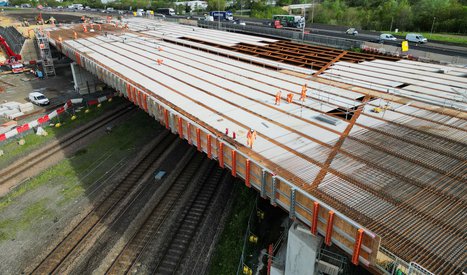The Ordsall Chord project’s main purpose was to create a link between Manchester’s main train stations for the first time; Oxford Road, Manchester Piccadilly and one of our own past-projects, the award-winning Manchester Victoria.
The Ordsall Chord delivers increased capacity, more frequent trains and less congestion at Manchester’s main stations - essential for such a major centre for business and culture.
The project has also created an additional 300 metres of new railway viaduct and enabled direct services to Manchester Airport from the North.
- Location
- Salford/Manchester
- Client
- Network Rail
- Main Contractor
- Skanska Bam JV
- Engineer
- Aecom / Mott MacDonald
- Architect
- BDP
- Tonnage
- 4,500

To aid the delivery of this project, The Northern Hub Alliance was formed, consisting of; Network Rail, Siemens, Amey Sersa JV, Skanska BAM JV and of course, Severfield. Being part of this alliance meant we were granted Early Contractor Involvement (ECI), which was essential during the design stage as certain aspects of the civil engineering works were particularly critical for programme delivery.
We had to meet a number of major works milestones and significant steel lifts - which happened at specific intervals in the timeline as part of this project. One such milestone was an arch lift that had been the subject of an incredible 18 months of prior planning. During these key periods work involved demolition of previous bridges, building new structures, installing new and realigning existing track, as well as re-signalling.
Our Assistant Project Manager Stuart Haslam commented: “I feel very proud to have been part of this project and seeing the finished product is a great achievement.”
Ordsall Chord is part of Network Rail’s multi-billion-pound Great North Rail Project, which is an impressive scheme focused on the transformation of rail connectivity in the North of England, to boost economic growth.
Sustainability ratings and success
This project has a CEEQUAL rating of Excellent. This was achieved through a variety of factors, including diverting over 96% of waste from landfill and reuse of materials on site wherever possible.




